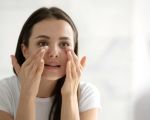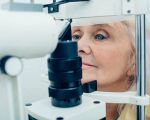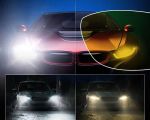
- 1-Understanding-Glare-and-Its-Effects-on-Night-Driving
- 2-Key-Strategies-to-Protect-Eyes-from-Glare-During-Night-Driving
- 3-Anti-Glare-Glasses-and-Lenses-for-Safe-Night-Driving
- 4-Driving-Techniques-to-Minimize-Glare-Impact-from-Bright-Lights
- 5-Real-Life-Experience-and-Personal-Insights-on-Glare-Protection
- 6-Professional-Resources-and-Products-for-Effective-Eye-Care-During-Night-Driving
1. Understanding Glare and Its Effects on Night Driving
Glare is one of the leading challenges drivers face during nighttime. It occurs when bright lights—such as headlights from oncoming vehicles or street lamps—scatter inside the eye and impair vision. This scattering causes discomfort and reduces contrast, making it difficult to see clearly.
Prolonged exposure to glare can increase eye strain, headaches, and even risk accidents by slowing reaction times. For many drivers, understanding how glare affects vision is the first step in learning how to protect eyes from glare during night driving and bright lights safely.
2. Key Strategies to Protect Eyes from Glare During Night Driving
Implementing effective strategies can significantly reduce glare impact and help maintain safe driving conditions. One essential approach is to keep your windshield and mirrors clean since dirt and smudges worsen glare effects. Regularly inspecting and replacing windshield wipers also improves visibility during rain or foggy conditions.
Adjusting your rearview mirror to the “night mode” or anti-glare setting helps reduce the brightness of headlights behind you. Additionally, maintaining proper headlight alignment on your own vehicle ensures you don’t contribute to glare for others.
2.1 Environmental Awareness
Reducing speed in poorly lit areas and increasing the following distance gives your eyes more time to adjust after encountering bright lights. Avoid looking directly at oncoming headlights; instead, focus on the right side of the road or lane markings to guide your path safely.
3. Anti-Glare Glasses and Lenses for Safe Night Driving
Wearing specially designed anti-glare glasses is an effective way to protect your eyes from glare during night driving and bright lights safely. These glasses often feature coatings that minimize light reflections and enhance contrast.
For individuals with prescription lenses, anti-reflective coatings on glasses reduce the internal reflections that intensify glare. Some drivers find yellow-tinted lenses helpful as they filter out blue light, which is a major contributor to glare, but the effectiveness of tints can vary by individual.
3.1 Choosing the Right Lenses
Consulting an eye care professional ensures you select lenses suited for your vision needs and driving conditions. Proper fit and lens quality are essential to avoid distortion or discomfort during long drives.
4. Driving Techniques to Minimize Glare Impact from Bright Lights
Safe driving habits play a critical role in managing glare effects. For example, keeping your eyes moving and frequently blinking helps maintain moisture and reduces dry-eye symptoms, which can worsen glare sensitivity.
Another technique is using the "20-20-20 rule" during long drives—every 20 minutes, look 20 feet ahead for 20 seconds—to relax eye muscles. If glare causes significant discomfort, taking short breaks during nighttime trips can prevent fatigue and maintain alertness.
5. Real-Life Experience and Personal Insights on Glare Protection
Jessica, an experienced night driver, shared her story of struggling with glare that made her anxious behind the wheel. After investing in anti-glare glasses recommended by her optometrist and adjusting her driving habits, she reported a remarkable improvement in comfort and safety. Jessica’s experience illustrates how combining practical tools with mindful driving strategies can transform night driving into a more confident experience.
Another example involves Michael, who found that upgrading to high-quality headlights with proper beam patterns dramatically reduced the glare he experienced from oncoming cars, highlighting the importance of vehicle maintenance in glare control.
6. Professional Resources and Products for Effective Eye Care During Night Driving
For those looking to enhance eye protection during night driving, Eye Docs offers access to trusted eye care professionals and a range of products tailored to reduce glare safely. From prescription anti-reflective lenses to expert advice on lifestyle adjustments, Eye Docs provides solutions that cater to individual needs.
Taking advantage of these resources not only protects your eyes but also enhances overall driving safety. Exploring products and consultations through Eye Docs can help you confidently face nighttime driving challenges with less glare and improved vision clarity.








